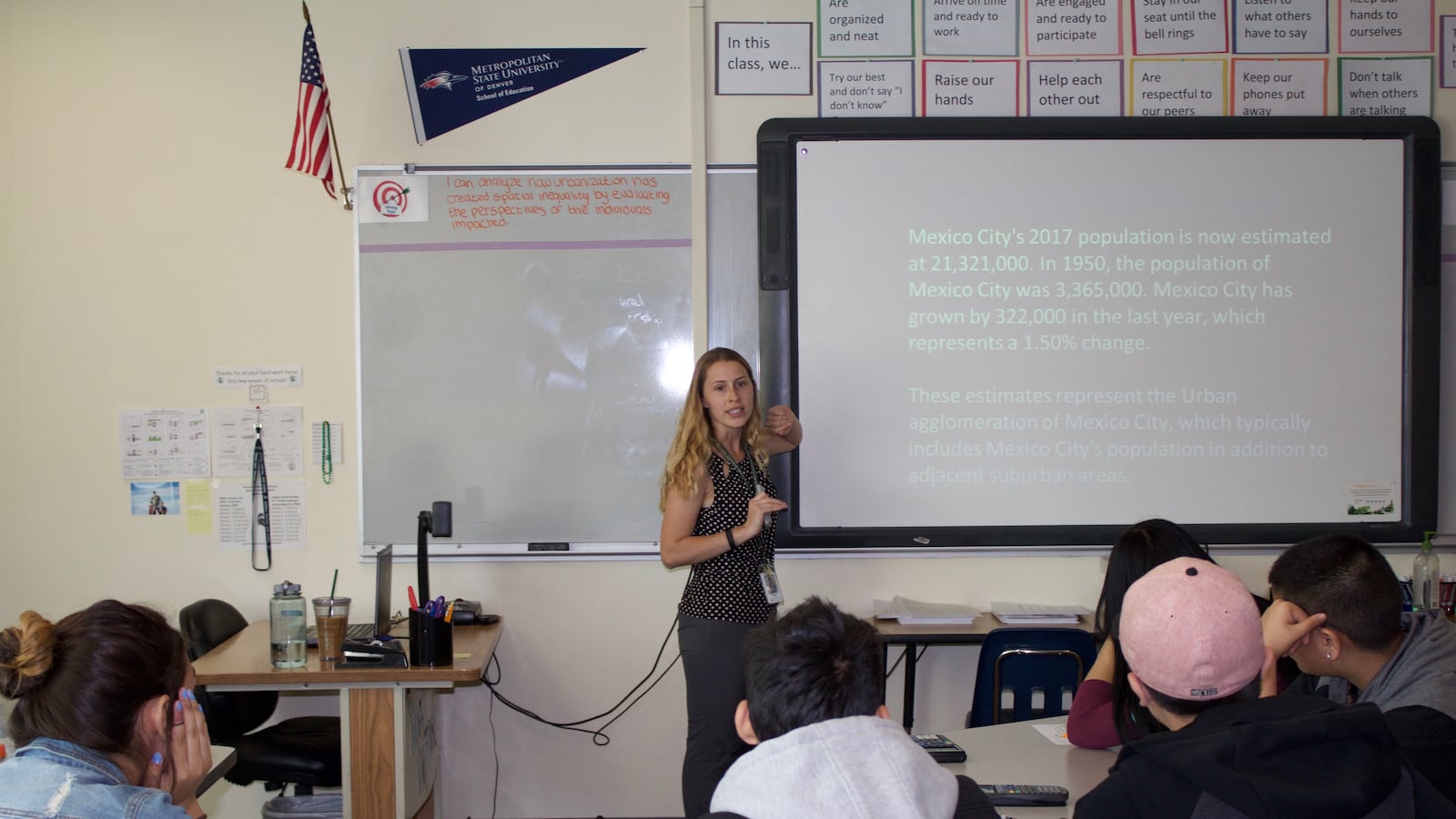Five Aurora Public Schools that have the freedom to try new ways to improve student performance are turning to a basic principle: keeping the focus narrow.
Last year, the schools started rolling out the work laid out in their state-approved innovation plans. There were bold, ambitious ideas for change.
As it turns out, principals felt they were doing a little bit of everything.
“They were all well-intended,” said Lamont Browne, Aurora’s director of autonomous schools. “But if you have too many goals, you have no goals.”
In May, district officials and consultants from Mass Insight who are helping execute the plans started working on a different approach with the five northwest Aurora schools. This year, each of the schools has a detailed plan focused on just three specific goals.
Principals, along with leadership teams at each school, worked through the summer and the first few months of the school year to identify three goals that would make the biggest differences at their schools and have been tweaking their plans to accomplish them.
Among the schools’ goals: improving attendance and decreasing lost time from behavior issues.
“This specifically is not just about innovation but about school turnaround and school improvement,” Browne said. “There are some things that are just, ‘This is what good schools are doing.’”
Principals say it’s working.
Gerardo De La Garza, principal of Aurora Central High School, which is the lowest performing school in the zone and has innovation status as part of its state-ordered improvement plan, said he’s already seeing big attendance boosts.
In the first quarter of the school year, average daily attendance at Central was “hovering around 86 percent,” De La Garza said. That’s up from average daily attendance of about 73 percent last year. The number of students identified as having severe and chronic absences also has improved by about 45 percent, he said.
Part of the work to improve attendance has included hiring a student engagement advocate, tracking student attendance bi-weekly and creating intervention plans for students who are chronically absent.
“Having a goal around that attendance has helped,” De La Garza said. “But we continue to look at our data and continue to look at our action steps, and we’ll see where we’re at at the end of the year.”
Another goal at Central, and one that relates to attendance, is about changing the way students are disciplined at the school to stop many from missing classes during suspensions or expulsions.
As part of that work, De La Garza changed the administration’s structure so that each grade level has a dean specifically working with that group of students and teachers on behavior issues. That dean also meets with teachers and other staff to talk about comprehensive plans for students who need help. And the school’s teachers and administrators are now all getting training in restorative practices — work that emphasizes guiding students to think about their actions and the effect they had on others so they can come up with corrections to their own behavior.
Aurora West, a middle and high school that’s also part of the innovation zone, is focusing on restorative practices this year as part of its plan.
“It’s both supporting teachers on how to build positive relationships in the classroom as well as on implementing restorative practices circles,” said Taisiya ‘Taya’ Tselolikhina, principal of Aurora West. “It’s also supporting our campus monitors and putting systems into place so that each campus monitor forms strong relationships with students too.”
Tselolikhina said she’s also seeing early improvement is in teacher effectiveness.
“We’re collecting data on every teacher’s data plan and we are observing to see, how does the planning match implementation,” Tselolikhina said.
Twenty-seven percent of teachers were proficient at the start of the year, and now 78 percent are, she said.
Tselolikhina said that she had originally written the goal shooting to have 80 percent of teachers proficient in demonstrating “excellence in planning and delivering rigorous, standards aligned lessons.”
“When I presented to staff, they asked, ‘Why 80 percent? What really drove that number?’” Tselolikhina said. “We asked staff, ‘What do you think it should be?’ They said we should be able to get to 100 percent. So we changed it.”
Teachers also jumped in to identify the parts of teaching they could help each other with, and areas of teaching where they could benefit from training.
“Last year’s goals, I wouldn’t say they were bad goals and we’re still trying to improve achievement at the end of the day, but it’s about, how are we going to do it?” Tselolikhina said. “You can’t just hope you’re going to improve.”
District officials are meeting with principals regularly and are re-evaluating the goals quarterly to track progress. They’re designed to be year-long goals, but if schools need to change their goals or move on to address other issues, district officials will help them do that.
“Achieving the high quality we’re looking for is going to take certain time for some folks and longer for others,” Browne said. “It is a combination of how do we implement innovation plans, but also how do we maximize performance.”

